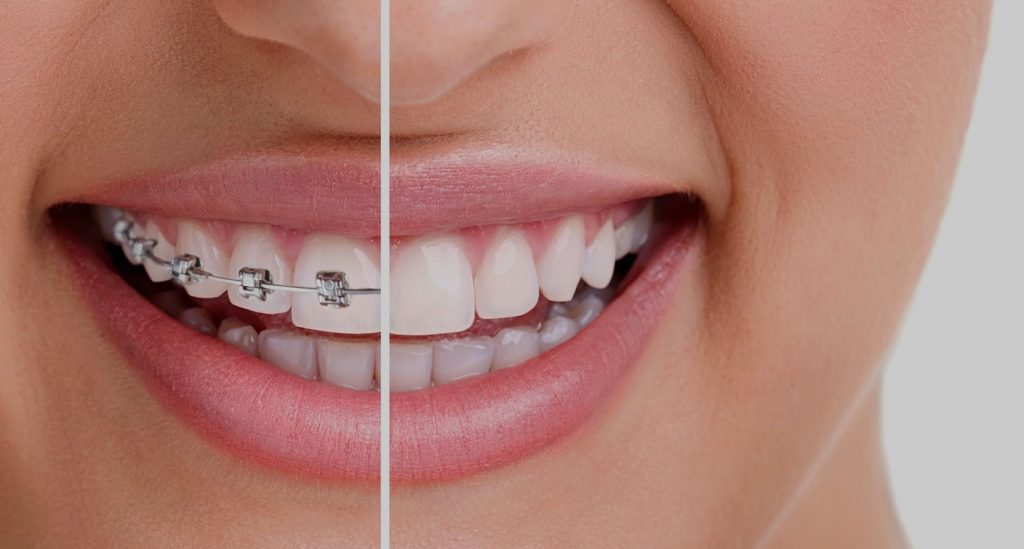
Who are orthodontists and what do they do?
You could think of an orthodontist as a sort of advanced form of a regular dentist. These are dental health care professionals who specialize in the movement of teeth: whether those still in development or those which have already taken a fixed configuration. In other words, if you struggle with a misaligned smile, these are the perfect people to help.
As for the actual practice, the most common issue they deal with is a condition known as malocclusion, that is, a person’s bite being out of healthy order. Malocclusion manifests as underbites, overbites, crossbites, etc. meaning that the teeth don’t fit together in the way that they naturally should.
The person’s jaws are not lined up the way that they should be. You can read more about malocclusion, including causes, symptoms, and treatments, at this link. If this sounds like you, then you should seriously consider an orthodontist appointment.
If your issues are minor, then your chosen general dentist might be able to remedy them on their own. More often than not, though, moderate and severe problems are handed over to the dedicated experts. You can be referred to one by either your dentist, or your general medical doctor, or a pediatrician if it’s your child’s teeth you are worried about.
Why would you need to see one?
Because they do more than just return the prettiness of a straight smile. While orthodontists do certainly straighten crooked teeth, their primary concern is your actual bite. They make sure that your chompers will fit together properly when you need to chew on something. Beyond the mundane practicalities of chewing, misaligned teeth and jaws can cause a whole host of other problems, and it’s really better to prevent them.
To begin with, if your teeth are crooked, crowded, or otherwise out of shape, they will be much more difficult to clean. This results in accumulating plaque, which further leads to cavities, decaying teeth, and even their loss.
In addition to chewing problems, talking can become uncomfortable, speech gets muddled and unclear, which negatively impacts the person’s confidence in any social situation. On top of all of that, your enamel will wear away much more quickly with all the clenched positions and awkward grinding angles, and that in turn invites a whole other set of issues.
You can learn more about enamel erosion and associated complications in this article: https://www.healthline.com/health/enamel-erosion
When should you start considering seeing one?
Like we previously said, you should most definitely consider an appointment if you experience any of the difficulties we described above. Even if you don’t, though, a checkup wouldn’t hurt. You can do that by seeing your chosen general dentist first.

Mention to them that you would like insight into your own “orthodontic condition” so to speak, and ask them whether they think a visit to a specialist is necessary. Ask for a referral. Even if your dental doctor decides that you don’t need such care at the moment, you will have broached the subject and can get regular updates from that point onward, helping to catch any issues early on.
If you have a child to take care of, be aware that early diagnostics is your best friend here. Even if there appears to be nothing wrong, have the alignment of their jaws and teeth checked at least once by the time they have turned seven years old.
While the jaw is still undergoing development, there is truly a lot of space for things to go wrong in some way. It’s better to catch wind of it before it grows into anything complicated. The majority of children start teeth correction treatment between the ages of nine and fourteen.
The majority of adults start down that road between the ages of twenty-two and forty-four, though by then it tends to be somewhat of a different story. Fully formed adult teeth are less malleable than children’s. On the other end of the spectrum are senior jaws: even people in their sixth and seventh decade of life might find themselves in need of braces!
For these age groups, discrete treatments tend to be in high demand, so they might want to find an Invisalign dentist instead of consenting to metal or ceramics corrective appliances.
Why an orthodontist, and not your dentist?
We mentioned a little earlier that both a dentist and an orthodontist can help you with teeth alignment problems, but that the latter is more suited to the task. Now, make no mistake: a general dentist can do absolutely fine work, so long as the issue is no more than general and mild.
But with the majority of adult patients, this is not the case, and going straight to the specialist is both more beneficial and more cost-effective in the long run. They have more and better training on the matter.
These people had to become dentists first, then orthodontics specialists second, which means they have the knowledge and skill of both. They typically have to undergo resident training that lasts two or three years before they are ready to start practicing.
Most importantly, they are in the loop with regards to the latest dental technology. These are specialists, remember: they are constantly updating their repertoire of tools and techniques. There is a rise of inventions and appliances that keep smiles straight, and a good orthodontist will know the direction these are taking.
And finally, while correcting your teeth is important, keeping them corrected is just as vital. If you are serious about straightening up, you will need help developing an appropriate system of aftercare for after your initial treatment is complete.
If you wear braces, you will need tailored treatment for a while after they’re removed. Throughout that, you will need to do checkups and possibly some adjustments, to adapt to the healing process of your dental apparatus. After all, every person’s body is a unique system.













Recent Comments